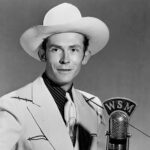This past weekend, something unexpected happened during our worship service. As we entered a time of prayer for healing, both physical and emotional, the melody and lyrics of the “Time After Time Song,” Cyndi Lauper’s iconic hit co-written with Rob Hyman of The Hooters, spontaneously emerged. It wasn’t planned, but in that moment, it felt profoundly right.
We found ourselves singing the poignant message of “If you’re lost and you look then you will find me, time after time; if you fall I will catch you, I’ll be waiting, time after time.” These words, set against the familiar and comforting I/IV chord progression of Healing In Your Wings, a Vineyard Music piece I wrote, created an atmosphere of gentle reassurance and hope. I sang, the band provided a supportive musical backdrop, and the congregation engaged in ministering to one another, praying for God’s healing touch.
While I deeply value the gravitas and liturgical depth in our worship, I also recognize the power of spontaneous, even unexpected moments to shift the atmosphere and elevate faith. In this instance, the “time after time song” was the unexpected gift that resonated deeply.
I recall a similar experience years ago at a conference in Canada. During a prayer ministry session, I spontaneously began singing the chorus of a popular radio song for an extended period – around ten minutes. It might sound unusual, but for someone in that room, it was a key to unlocking a deeper connection with God. Many others were also profoundly moved as we mentally reframed the lyrics to reflect God’s relentless pursuit of our hearts.
It’s crucial to understand that this isn’t about being cheesy or irreverent. There’s a right way and a wrong way to integrate popular music into worship. I’ve certainly witnessed it done poorly, even for mere novelty. However, if we become so cautious that we shut off the tap of spontaneity, fearing potential missteps, we risk missing powerful expressions of God’s presence through the music of our time.
I believe we must remain open to fresh integrations of meaningful art. And yes, I consider “Time After Time” to be a small masterpiece. In its own way, it possesses a similar emotional depth and impact as pieces like “Fields Of Gold,” a Bach Sonata, or a Rembrandt painting, though perhaps less timeless in its cultural reach.
To articulate this perspective, I embrace the concept of “Creational” art, a category that exists alongside the traditional Sacred and Secular divisions that many contemporary Christians adhere to. For me, truly “secular” music, intentionally designed to draw us away from God, is rare. Perhaps some extreme genres fit this description, but they are not my focus.
Instead, much of what is often labeled “secular” music is, in my view, “Creational.” Songs about love, friendship, emotions, and the human experience, while potentially human-centered, can be perceived differently when viewed through a different lens.
“Creational” art, in this context, is art created by beautiful but flawed humans, made in God’s image, expressing something meaningful without explicitly intending to point towards or away from God. One doesn’t need to be a Christian to create art that reveals something stunning about creation and the human condition.
Therefore, for me, this “Creational” art is fair game, especially when thoughtfully integrated into a rich, Christ-centered worship context. It’s about expanding our understanding of what can contribute to worship, not diluting it.
(Let me be clear: I’m not advocating for a wholesale rush to incorporate every popular song into worship. My point is to encourage a more open approach to this area, one that isn’t immediately dismissive or fearful.)
This “Creational” perspective is why I comfortably include sonically beautiful hymns in relaxed settings, like neighborhood gatherings. My friend David Ruis has incorporated classical music into contemporary worship. I’ve led contemporary worship songs in historic chapels. As a worship songwriter and leader, I draw inspiration from diverse sources and musical styles. Great art is all around us.
My personal playlists reflect this eclecticism, moving seamlessly from Sigur Ros to Jon Foreman, Mumford & Sons, Brian Eno, Sun Lux, Phil Wickham, Death Cab For Cutie, Gungor, and even orchestral movie trailer music like Two Steps From Hell.
It all blends together, and perhaps it should. However, we must always exercise discernment regarding the “musical food” we consume. Popular art is often saturated with human-centered worldviews and an emphasis on fleeting desires.
We become what we consume. Therefore, discernment is essential. Music is not morally neutral; it transmits worldviews and shapes our souls.
Furthermore, not all songs serve the same purpose, and some are more or less suitable for a modern worship setting.
Some songs become foundational elements of our worship sets, while others serve to “season” the experience occasionally. Others might be used rarely, but in a moment of inspiration, they become valuable tools in our artistic palette.
Crucially, I never lose sight of who I am leading in worship and their sensitivities and established points of connection with God. Pastoral leadership demands this awareness. Worship is a communal experience, and we are there for our community. Like in a family, choosing to forgo something we are “free” to do for the sake of the shared experience is a natural part of community life.
Please understand my intention: Not every piece of creative work created with secular intentions is automatically appropriate for worship. However, when less conventional art can enrich a moment and serve the overarching purpose of worship, we, as leaders, should be equipped and willing to draw upon it.
Just as in teaching or visual arts, the art of our age and every age can be another valuable tool in the thoughtful worship leader’s toolkit. That is ultimately why the “time after time song” found its place in my worship set that weekend.

